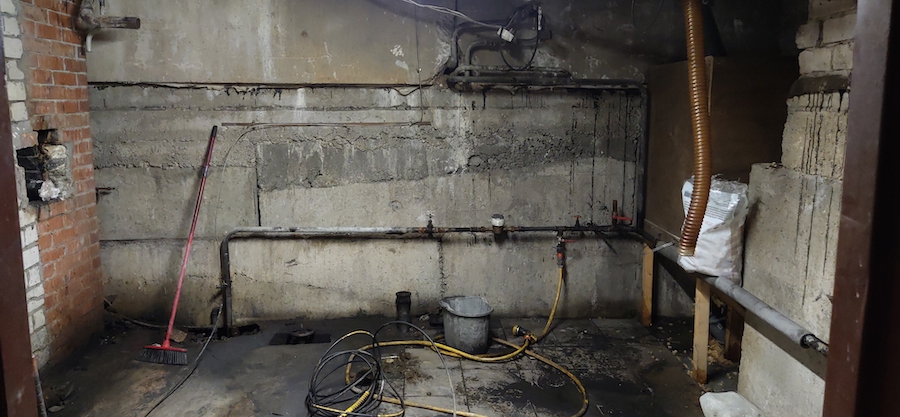Sump Pump Repair and Replacement: Keeping Your Basement Dry and Protected

Understanding the Importance of a Functioning Sump Pump
Living in a flood-prone area can pose a significant risk to your home, particularly your basement. Thankfully, a sump pump is a valuable tool that helps protect your basement from flooding by efficiently removing excess water from the sump pit. However, like any mechanical device, sump pumps can wear out over time, leading to potential malfunctions. In this article, we will explore the signs of a faulty sump pump and guide you through the process of sump pump repair and replacement.
Recognizing the Signs of a Faulty Sump Pump
To ensure the effectiveness of your sump pump, it’s essential to identify any signs of trouble. Here are a few common indicators that your sump pump may not be functioning properly in Delaware, Chester County, New Castle County, or Kent County:
1. Water Pooling in Your Basement
If you notice water pooling in your basement in Delaware or the surrounding areas, it could be a clear sign that your sump pump is not adequately removing the excess water from the sump pit. This could be due to a malfunctioning pump or a component problem.
2. Increased Frequency of Pump Operation
An operational change in your sump pump, such as it running more frequently than usual, can indicate an underlying issue. This could be a result of a damaged float switch or an impaired motor, compromising its ability to efficiently pump out water.
3. Unusual Noises Coming from the Sump Pump
Strange noises, such as grinding, rattling, or humming, are abnormal for a properly functioning sump pump. These sounds can indicate mechanical problems or clogs within the pump, which should be addressed promptly to prevent further damage.
4. Failure to Turn On
If your sump pump fails to turn on, it is crucial to investigate the issue immediately. This could be caused by a power supply problem, a faulty switch, or a malfunctioning motor, requiring immediate attention to prevent potential flooding.
Troubleshooting and Repairing a Sump Pump
Should you suspect any issues with your sump pump, it’s wise to troubleshoot the problem before considering a repair or replacement. Here are a few steps you can take to investigate and potentially resolve the problem:
1. Ensure Proper Power Supply
Check if the sump pump is correctly plugged in and turned on. Sometimes, a loose connection or tripped circuit breaker can cause the pump to stop functioning.
2. Inspect the Float Switch
Examine the float switch, which activates the pump when water levels rise. Make sure it moves freely and isn’t obstructed by debris. If the float switch is damaged, it may need to be replaced.
3. Clear Potential Clogs
Inspect the discharge line for any obstructions or clogs that could impede the proper flow of water. If you find any debris or blockages, remove them carefully to restore the functionality of the sump pump.
4. Check for Leaks
Examine the check valve, which prevents water from flowing back into the sump pit. Ensure it is not leaking, as this can hinder the pump’s efficiency. If leakage is detected, consider replacing the check valve.
Should these troubleshooting steps fail to resolve the issue, it is recommended to seek the assistance of Done Right Today Plumbing and Drain Cleaning, a professional plumbing service in Delaware, Chester County, New Castle County, and Kent County, for sump pump repair.
Replacing a Faulty Sump Pump: A Step-by-Step Guide
If your sump pump is beyond repair or if you prefer to replace it, you can follow these simple steps to complete the process:
1. Unplug the Old Sump Pump
Ensure the old sump pump is disconnected from the power supply to avoid potential electrical hazards during the replacement process.
2. Disconnect from the Discharge Line
Detach the old sump pump from the discharge line, carefully removing any connecting pipes or fittings.
3. Measure and Connect a New PVC Pipe
Measure a new length of PVC pipe to connect to the discharge line in Delaware or the surrounding areas. Make sure it fits securely and creates a tight seal to prevent leaks.
4. Connect the New Sump Pump
Attach the new sump pump to the newly installed PVC pipe, ensuring a secure connection. Take care to follow the manufacturer’s instructions for proper installation.
5. Lower the New Sump Pump into the Pit
Carefully place the new sump pump into the sump pit, ensuring it is positioned correctly for optimal performance.
6. Level the Pump
Check and adjust the position of the sump pump to ensure it is level. This helps prevent potential operational issues and ensures the float switch functions properly.
7. Verify the Float Switch
Ensure that the float switch moves freely and activates the pump when water levels rise. Test its functionality before completing the installation.
8. Test the New Sump Pump
Once the sump pump replacement is complete, conduct a thorough test of the new sump pump to ensure it is working correctly. Monitor its performance to ensure it effectively removes water from the sump pit.
Partner with Done Right Today Plumbing and Drain Cleaning for Sump Pump Repair and Replacement
At Done Right Today Plumbing and Drain Cleaning, we specialize in sump pump repair and replacement services in Delaware, Chester County, New Castle County, and Kent County. Our experienced team of plumbers is dedicated to providing exceptional service to keep your basement dry and protected.
Contact Us Today
Schedule a service appointment by contacting Done Right Today Plumbing and Drain Cleaning. We are available 24/7 to assist you promptly, providing reliable plumbing services to ensure the functionality of your sump pump and the safety of your basement.
Additional Tips for Sump Pump Maintenance
To ensure the long-term functionality of your sump pump and maintain a protected basement in Delaware, Chester County, New Castle County, or Kent County, consider the following maintenance tips:
Regularly Check Your Sump Pump
Take the time to inspect your sump pump periodically to ensure it is operating correctly. This can help identify potential issues early on and prevent major problems.
Clean the Sump Pump Strainer
To prevent clogs and maintain optimal performance, clean the sump pump strainer every month. This simple task can go a long way in preventing debris from impeding the pump’s functionality.
Inspect the Discharge Line
Annually inspect the discharge line for any leaks or signs of damage. Promptly address any issues to prevent water from flowing back into the sump pit.
Replace Your Sump Pump Periodically
Consider replacing your sump pump every 10-15 years, even if it appears to be functioning correctly. This proactive approach ensures you have a reliable pump and minimizes the risk of failure during critical moments.
By following these tips and promptly addressing any issues that arise, you can ensure that your sump pump functions properly, safeguarding your basement from potential flooding. At Done Right Today Plumbing and Drain Cleaning, we are here to assist you with all your sump pump repair and replacement needs in Delaware, Chester County, New Castle County, and Kent County. Contact us today to schedule a service appointment and experience our reliable plumbing services firsthand.

